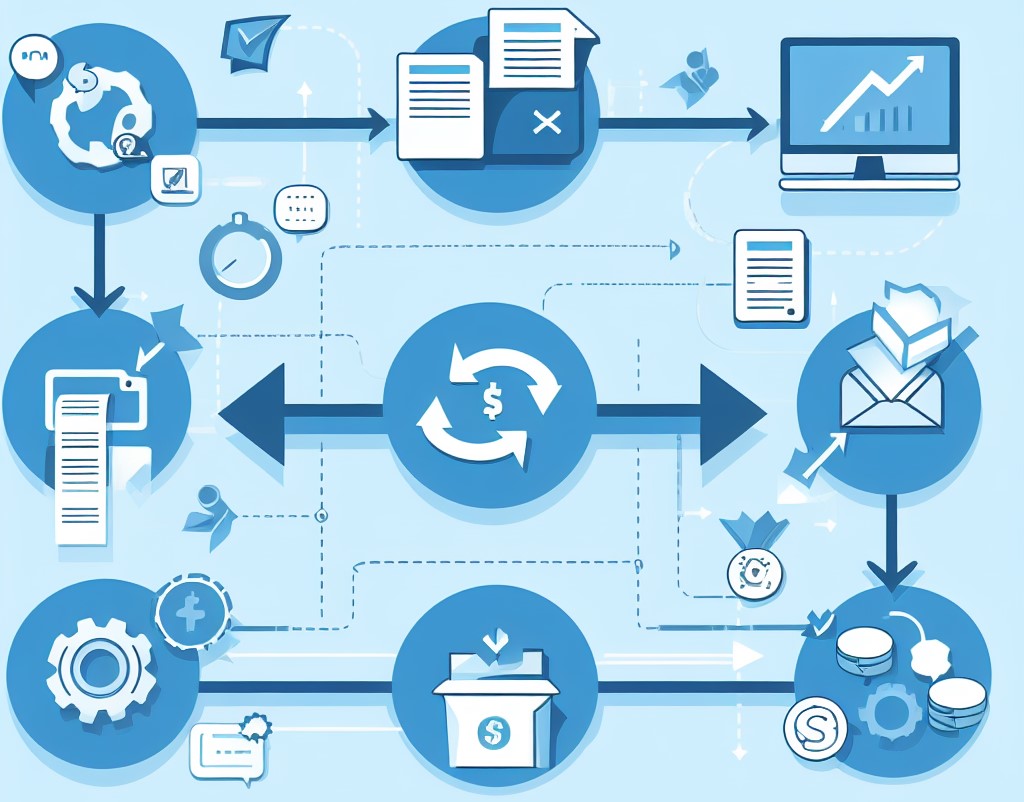Even though it seems that Artificial Intelligence (AI) has only recently become trendy, it’s actually been around since the 1950s. You may not have been using terms like “generative AI” and “LLM” until the last few months, but it’s likely that you have been using AI somewhere, even if you didn’t realize it! Every time you use the autosuggested text offered to you when you compose an email or let your presentation program redesign your slides, you’re using AI!
Document management has also been enhanced using AI. Leading DMS companies have already started implementing AI into their software, and for good reason. AI takes the step from simple document retrieval to processing the data in your documents and helping you make smarter business decisions in a fraction of the time.
Here are some of the ways that AI can help content management.

1. Enhanced Search
Today, you likely search your document repository via clicking into the project or folder you want to view. Or, if everything in your document repository is text-searchable, you can search by keyword or phrase.
With an AI-powered search, you can take that to the next level. It becomes search, retrieval, and data extraction.
Instead of clicking into every invoice for a month, you will be able to prompt your repository for things like “give me the full total of how much we spent with Company X last month.” Searching through your organization’s minutes for instances of a topic? Prompt your repository with “show me every document from 2010 that mentions “Topic X.”
2. Optical Character Recognition (OCR)
Optical character recognition (OCR) technology can convert the non-text-searchable content in your repository into searchable text. However, OCR technology simply looks for text and transcribes it so that you can search for that document in your repository. Standard OCR tools are typically programmed for each particular document type and don’t perform as well if fed different documents.
AI-powered OCR technology not only looks for the text and transcribes it, but it also reads and understands the document. This means that you can run multiple types of documents into the technology, and it won’t only transcribe the document for you, but it will also extract proper metadata. A great example of this is Laserfiche’s Smart Invoice Capture. It lets you upload an invoice from any of your suppliers and it will use AI and machine learning to extract all key information without any human intervention.
And this doesn’t stop at text documents. AI-powered OCR technology can also look at images and create a text summary of what is in the image. Additionally, it can transcribe video and audio files so you can search that content just like you would a document.
3. Document Summarization
If you’re short on time, you can have AI read and summarize lengthy documents for you. AI will be able to tell you what the main points of the document are, if there are any action items, and even the tone of the document.
This is a feature that content management platforms like Laserfiche already have available for their users.
4. Document Classification and Metadata Tagging
Instead having to manually file a document in your repository and filling in all of the metadata fields, AI can automate the process!
For example, this technology could look at a health insurance enrollment form and deduce that it is an insurance document. Based on the metadata requirements previously set up, it can also automatically pick out information like name, birthdate, social security number, etc. and fill out those metadata fields.
Now, there are current technologies that do this excellently, both with and without AI. But AI can take this to the next level by also understanding whether the uploaded document is complete. It can also flag discrepancies like missing or incomplete inputs.
Additionally, it can use natural language processing (NLP) to understand the sentiment of the document. That means the AI can review the text of the document and determine if the sentiment of the document is positive or negative. If you regularly work with customer or employee feedback, this can easily identify which documents you need to address.
Automated document classification will streamline your document intake process and then allow for review or workflow automation, which will be explained more in the next point.

5. Next-Level Workflow Automation
We’ve talked a lot about workflow automation and there’s a good chance that you’re already using workflow automation in your organization. Workflows are automated by pre-defined rules. It can be as simple as “when a file is added to X folder, email Y.”
AI can take your automation further by making predictions and prioritizing tasks. In the previous example we discussed how NLP can infer the sentiment of a document. An AI-powered workflow can prioritize these documents based on the strength of the sentiment.
For example, let’s say you’re collecting customer feedback. AI-powered workflows can determine how upset a customer is and rank the feedback accordingly. This way, you know exactly which customers need your attention first.
6. Document Security
AI can also help with the security of your documents. If you work in an industry or department where there is a lot of sensitive information in your documents, AI can identify the information and automatically redact it.
You can also train AI to enforce access controls based on the type of document uploaded. Additionally, it can analyze the document and assign a retention schedule to it, so you aren’t storing documents longer than you need to.
AI can also monitor your repository to ensure that all documents uploaded are in compliance with all applicable rules and regulations. It can flag documents that are not in compliance for review.
As you can see from these points, Artificial Intelligence is a serious complement to any document management system, and a vital part of any organization’s information management plan. AI helps businesses save money, and free their employees from monotonous, time-intensive work.
If you want to harness the power of AI for your business’ content management, please contact us or call 630-3210-0601. We’ll be happy to talk about your AI and content management needs, suggest the best software for your organization, and make sure that your files are digitized so you can make the most out of your AI tools.
Questions or comments on this article? Find us on LinkedIn.
